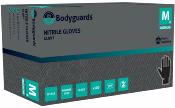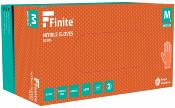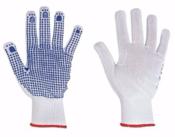RESPIRATORY PROTECTION INFORMATIONRESPIRATORY TERMINOLOGY In order to understand the basics of Repiratory Protective Equipment it is important to clarify the following definitions DUST Solid air-borne particles e.g. Coal dust MIST Tiny liquid droplets suspended in the air e.g. Spray FUME Very fine temporary airborne particulates, usually created by heat e.g. Welding fumes VAPOUR A substance which has diffused/evaporated ito air e.g. Petrol vapour GAS Air-borne at room temperature with no defined shape and expands freely e.g. Oxygen WEL Workplace Exposure Limit set and approved by HSE and is the maximum allowable concentration of a substance legally allowed in the Workplace. This is expressed as a Time Weighted Average (TWA) usually over 2 set periods The list of substance WEL are published in the HSE EH40 document STEL Short Term Exposure Limit - maximum exposure permitted over a 15 min reference period LTEL Long Term Exposure Limit - maximum exposure permitted over an 8 hour reference period IDLH Immediately dangerous to Life or Health - level of concetration of a substance that is likely to cause death or delayed/immediate adverse health effects or prevent escape from such an environment NPF Nominal Protection Factor - As APF but based on laboratory measurements for EN approval APF Assigned Protection Factor - Level of protection that a particular type of respirator can be expected to provide if fitted correctly - based on working measurements. e.g. An APF of 10 should reduce the exposure of airborne contaminants by x10 FFP Filtering Face Piece HM Half Mask - A mask that covers the nose and mouth FFM Full Face Mask - A mask that covers the eyes, nose and mouth FF Face Fit - There is a requirement that masks are tested and assesed for closeness of fit in the workplace For Half Masks a simple Qualatative Test involving wearing a hood and introducing controlled bitter/sweet tasting solution to asses fit. For other Masks a quantatative test is required. EH40 List of WELs published By HSE 2011 for use to comply with COSHH regulations RESPIRATORY SELECTION Identify the Hazard - Dust, Metal fume, Gas, Vapour etc. Asses the Hazard - Level, Toxicity, Exposure time, Other PPE protection Select the proper Respirator - FFP, HM,FFM etc Training in fitting & Use - to optimise Respiratory Protection MEDICAL DISPOSABLE FACEMASKS Medical facemasks are regulated by the Medical Devices Directive and are tested to and comply with EN14683: Protection against Bacterial Contamination. Defines the Bacterial Filtration Efficiency of the facemasks and divides its tests into 3 categories: Part 1: Bacterial Filtration Efficiency in vitro (BFE) Standards of the filtration of a controlled concentration of Staphylococcus aureas. Results: BFE of 95% = Type I BFE of 98% = Type II Part 2: Breathing Resistance (Delta P) Testing of the air flow pressure passing through the mask. Results: Type I & II (non splash resistant) = <5.0 mmH2O/cm2 Part 3: Splash Resistance Testing of a determined quantity of artificial blood sprayed on the mask. Results: Type I & II not applicable Type IR & IIR minimum 120 mmHg Medical masks are not PPE, they protect the patient and the surgical area from contamination.Medical masks prevent droplets being expelled into the environment by the wearer and protect patients in surgery from these being transferred to the operative site DISPOSABLE PARTICULATE RESPIRATORS - FFP Current Standard EN149:2001+A1:2009 There are 3 main categories of masks FFP1 FFP2 FFP3 80% of particles < 2 microns 94% of particles < 0.5 microns 99.9% of particles < 0.5 microns APF 4 10 20 USE Non toxic Dusts,Mists & Fumes Harmfull Dusts, Fumes & Aerrosols Toxic Dusts, Fumes & Aerosols e.g.Hand sanding, Drilling & Cutting e.g. Glass Fibre, Metal & Plastics e.g. Toxic Metals, Hardwood Building Sector Softwood Work Grain Dust, Mould spores D Indicates a mask has undergone additional Dolomite Clogging Test - easier breathing resistance for longer NR Indicates Non-reusable - is approved for one shift use only R Indicates a mask can be used more than once, but must be cleaned and stored correctly between use All masks are approved for Oil and Water aerosols Respirators are available with/without an exhalation valve Advantages of a Valve include - Easier to exhale, cooler to wear, stays comfortable for longer and reduces eyewear misting Disadvantages include - More expensive and the User can contaminate the immediate atmosphere Activated Carbon can also be incorporated into this style of mask which can offer protection against nuisance level smells and odours (below the WEL). FFP must not be used in atmosheres defficient in Oxygen (<19.5%) or where gases and/or vapours are present The presence of facial hair in the region of the faceseal will significantly reduce the protection provided. A note of caution - Nuisance Dust Masks although resembling a FFP are not Protective Devices and should not be used REUSABLE RESPIRATORS & FILTERS EN140 - is the European standard that covers the technical specifications for both Half & Quarter masks. Half mask (HM) is defined as covering the nose, mouth and chin EN136 - is the European standard that covers the technical specifications for Full Face Masks. Full Face mask (FFM) is defined as covering the eyes, nose, mouth and chin. FILTER SELECTION STANDARD HAZARD TYPE CODE COLOUR CODE DESCRIPTION APF HM APF FFM EN141 Gas/Vapour A BROWN Organic Vapours with bp greater than 65C 10 20 Must have good warning properties B GREY Inorganic Gases & Vapours 10 20 Not Carbon Monoxide E YELLOW Acid Gases & Vapours 10 20 e.g. Sulpher Dioxide K GREEN Ammonia 10 20 including Ammonia derivatives HgP3 RED/WHITE Mercury Vapour 10 20 includes Mercury compounds NOxP3 BLUE/WHITE Oxides of Nitrogen 10 20 single use only EN371 AX BROWN Organic vapours with bp less than 65C 10 20 single shift use only EN143 Particulates P1 WHITE Low efficiency 4 X P2 WHITE Medium efficiency 10 10 PR WHITE High efficiency 20 40 EN141 also classifies filters by capacity, with classes 1 - 3 being low, medium and high capacity, respectively WARNING DO NOT USE any Filtering Respirator if: ◗ In oxygen deficient atmospheres i.e. less than 19.5% by volume at sea level ◗ In poorly ventilated areas or in confined spaces ◗ In atmospheres where the concentration of toxic contaminants is unknown or is Immediately Dangerous to Life or Health (IDLH) ◗ where Gas or Vapour contaminants with poor warning properties i.e. odour, taste or irritation ◗ At concentrations of substance greater than those for which the respirator is marked or permitted by COSHH or other applicable regulations ◗ Where chemicals are likely to ‘desorb’. In such cases, filters must only be used once then immediately discarded e.g. AX filters Filtering Respirators - Maintenance The COSHH regulations require that all ‘filtering’ respirators be thoroughly examined at least once a month (specifically 28 days), if in regular use. For filtering respirators used only occasionally, for short periods, against dusts or fumes of relatively low toxicity, longer intervals between examinations may be suitable, but must not exceed 3 months. The result of these examinations must then be noted on the Maintenance Record Card for the individual’s mask. These records should be kept for a period of five years. There are specific masks with integral filters tested to EN405 which are approved for use for up to 30 days and then discarded No inspection or record keeping is applicable in this case |



